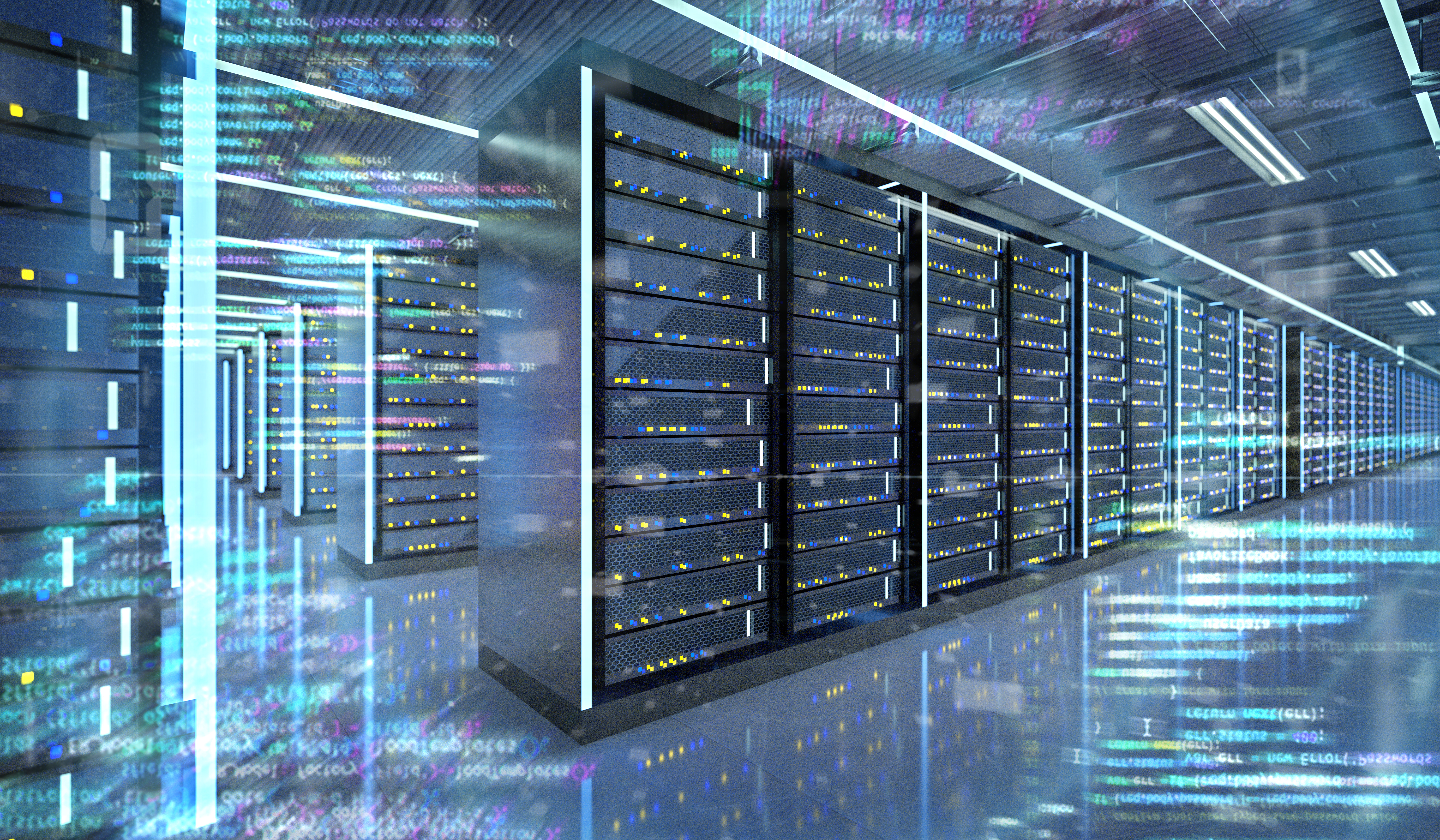
Data centers play a fundamental role in our society and economy. Everything that happens online depends on data centers, which host many digital applications and thus form the basis of the web. Without them, there would be no banking or health services, no Netflix or social networks. Without data centers, there’d be no more digital world! Let’s review.
Without knowing it, we all operate and use datacenters on a daily basis, these immense digital infrastructures whose activities and crucial importance for modern society are unknown to many. Although knowledge of these giants may only seem accessible to technicians, engineers or industry insiders, the impact they have on the lives of citizens is real and directly affects us, as more and more critical aspects of our lives – such as health, education, financial services, and public administration services – depend on them. These sectors are considered to be “critical” because they are vital to society and thus called “OIV” for Operators of Vital Importance by the State.
DATA CENTERS: BACK TO BASICS
Data centers contain thousands of square metres of physical servers hosting the important corporate and institutional data that allow us to make payments, shop online, request services from government agencies, or watch a movie or football match on a streaming service. Data centers operate 24 hours a day to ensure the continuous operation of essential digital services for the population.
Today’s healthcare systems, for example, increasingly depend on data centers to ensure smooth, reliable and continuous operation. Yet these buildings remain largely absent from discussions on the resilience of societies and infrastructures.
Like the electrical grid, data centers are meta-infrastructures that enable critical sectors and the nation to function. They support and interconnect many other critical sectors. Transportation, energy, finance, national security, healthcare systems, and other vital services all rely on up-to-the-second critical data and applications that use the data stored in and accessible through data centers. These buildings house global information systems that are essential to the functioning of global logistics, government services and the smooth running of large organisations.
Everyday activities such as making card payments, sending emails, booking tickets for a concert, train or medical appointment, receiving instant messages, digital medical records, using social networks, online conferencing and storing our digital photos all involve data centers. Yet most of us know little about them, even though we interact with them daily from our smartphones, tablets or computers.

One of the possible reasons for this lack of awareness of data centers among individuals and businesses is the invisibility of their infrastructure. Unlike the highly visible pylons and power lines that form the basis of the electrical grid, we don’t often have the opportunity to see or interact directly with data infrastructure. Data centers are usually located in large, unremarkable-looking buildings (resembling warehouses) on the outskirts of urban centers with little traffic.
Another reason we know little about them is the language we use to talk about the cloud services, as if it were something a bit mysterious with data stored somewhere in the sky. When something is posted on social media, when a salesperson uses their CRM tool or when an e-tailer updates their inventory, the consequences of these actions are very real for data centers. Everything digital has a material aspect. Digital data will always be stored on a real physical facility, which is itself housed in a building that is under constant surveillance and with reinforced physical security.
THE CRITICALITY OF DATA CENTERS
The digital services we use every day are made possible by data centers which must store, back up, calculate and process all the data generated by these services. This data must be:
- confidential : information must only be accessible to those who are authorised.
- intact: modifiable only by authorised persons and according to a defined process.
- available : accessible and usable by its authorised recipient at the place and time intended according to specific constraints (real time, redundancy, etc.).
- traceable : to keep track of the status and movements of the information. Without this, there would be no way to be sure that the other three criteria are met.
Imagine if a self-driving car received information half a second late. Or if Facebook or Twitter were unavailable for several hours. Or if financial transactions displayed erroneous amounts. All these services require a solid and secure infrastructure to guarantee their continuity. Let’s look at some examples.
DATA STORAGE
Data centers store massive amounts of digital data, ranging from simple personal files to sensitive corporate and government data. This data is essential for strategic decision-making, research, planning and more. Without data centers, we would be unable to store and analyse this data, making it more difficult for businesses and governments to make decisions.
ENTERTAINMENT APPS AND BANKING SERVICES
Many of the online services we use every day, such as social networks, streaming applications, online shopping platforms and online banking, are based on data centers. These services have become indispensable in our daily lives and economy. Data centers are needed to provide fast and reliable online services to millions of people.
ARTIFICIAL INTELLIGENCE (AI) AND MACHINE LEARNING
Data centers are increasingly used in the world of AI in all fields: enhanced detection of cancer risks in the medical field, predictive maintenance in industry, irrigation of crops according to soil conditions in agriculture, management of transport flows in logistics, etc. These are all subjects that require a high level of expertise. These are all subjects that require a large amount of data to train the models and perform intensive calculations. Data centers are thus an essential part of this puzzle.
ONLINE SERVICES
Companies and governments are increasingly using digital technologies to improve their operations and business processes. Data centers are key to enabling this digital transformation by providing flexible, scalable and increasingly affordable hosting and data storage services.
INNOVATION
Data centers are also driving innovation in many areas by enabling large-scale data collection and analysis. Data stored in data centers is used for research in health, science and technology. Data centers enable the emergence and deployment of new technologies such as the IoT (Internet of Things), which connect billions of devices to data centers to collect and analyse data in real time.
AN UNOBTRUSIVE BUT INDISPENSABLE PRESENCE IN ALL SECTORS
Without data centers, there would be no web, no online services and no access to the applications that are now part of our daily lives. This is why they are under permanent control, because, like major public services, it is unthinkable that they should be shut down or endangered, given their strategic importance in all areas:
- Telephone calls and video conferences: without data centers, there’d be no Zoom, Microsoft Teams, GoTo, WebEx, Google Meet, etc. It’s the data centers that can manage the fluidity of a team meeting or FaceTime call on the other side of the world in real time.
- Banking and financial services: all banking operations are digitised, from depositing a cheque to a foreign exchange transaction, via an online payment. Everything happens in data centers. Even stock exchanges no longer need trading rooms. The New York Stock Exchange, for example, operates from data centers in New Jersey, with backup centers in Chicago in case of disaster.
- IoT: smart speakers, connected lights, autonomous irrigation systems, sensors and alarms… all communicate with centralised hubs in data centers that receive, process, secure and store data.
- Social networks: everything that happens on Facebook, TikTok, Instagram or YouTube is hosted in data centers around the world. The same goes for business applications and networks, from LinkedIn to SharePoint to SalesForce to Oracle.
- Streaming audio and video: from Spotify to Netflix to Apple Music, Disney+ or replays of your favourite shows… these videos, podcasts and songs require space in data centers that must be particularly responsive and resilient.
- Distance learning: online courses, MOOCs, distance learning… it is impossible to improve your skills without data centers. Data centers were put to great use during the COVID-19 pandemic, enabling millions of schoolchildren, students and professionals to continue their education online.
As physical infrastructures that enable digital transformation and the sharing of digital data, data centers play a fundamental role in our societies. They enable access to basic services for all citizens, simplifying and making accessible to all activities that were previously much slower and more expensive. It is now more important than ever to know and understand the role and impact of data centers in our lives, and of those who work in them.

